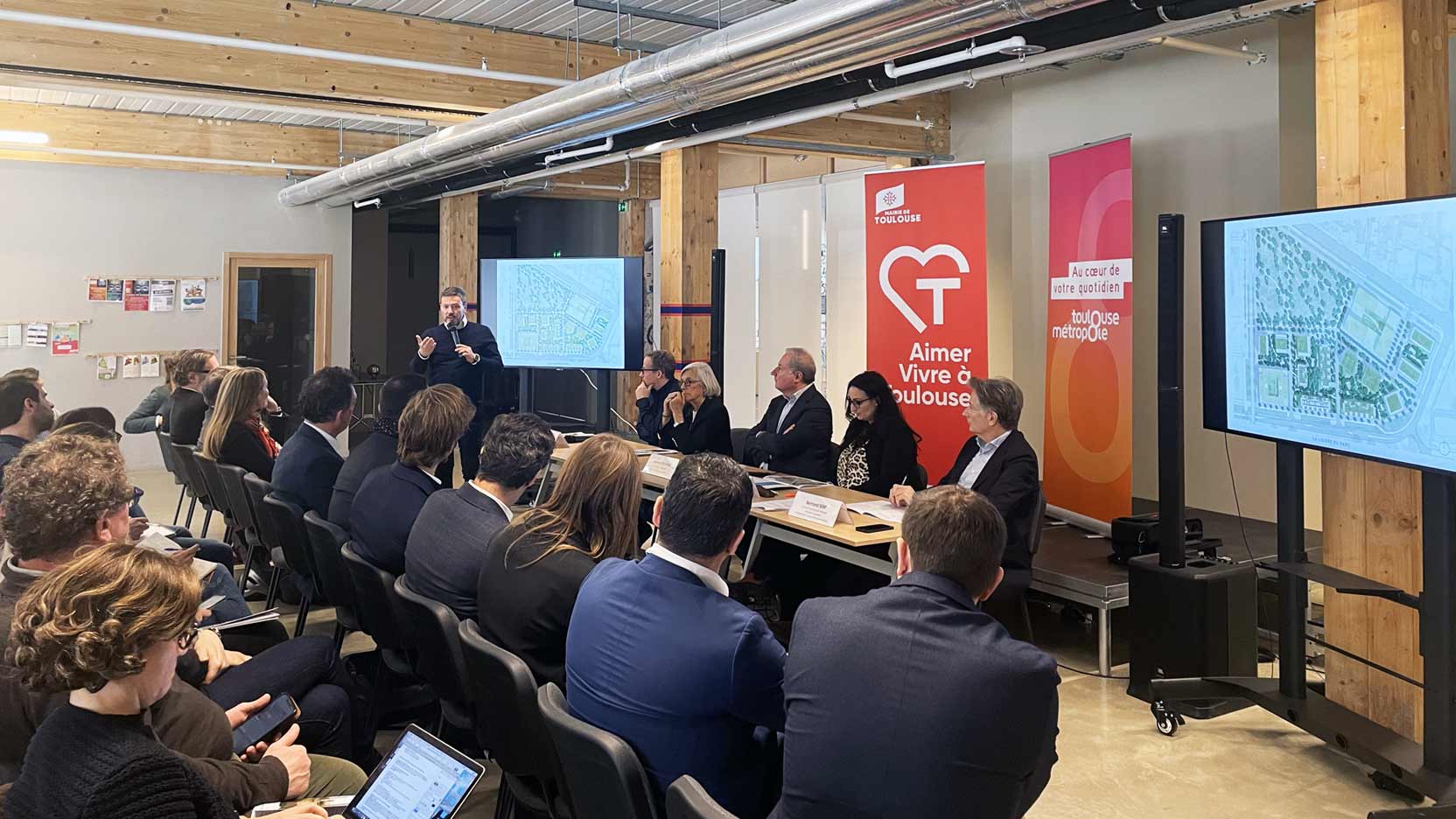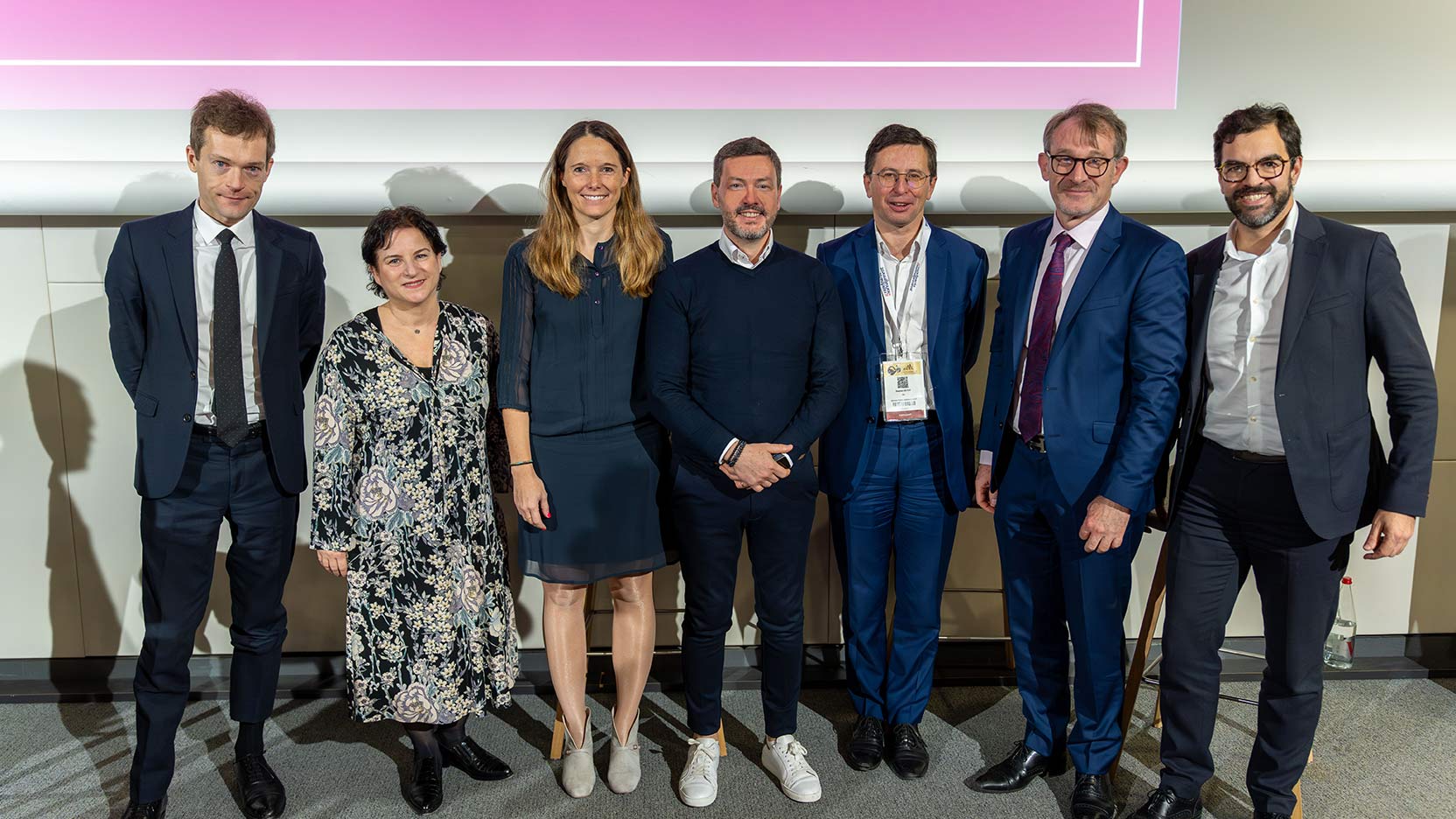On May 23rd, the Institut de l’Épargne Immobilière et Foncière (IEIF) hosted a webinar featuring Sébastien Matty, our Chairman, and Pierre Etchegoyhen, Head of Architecture at I3F. The theme was “Off-Site Construction: A Revolution in the French Building Sector”, highlighting the challenges and opportunities brought by this innovative method. This webinar was part of a broader series aimed at raising awareness of the role individuals and companies can play in the fight against climate change.
Key Takeaways from Sébastien Matty’s Presentation on Off-Site Construction :
What is off-site construction?
Off-site construction is based on a clearly defined methodology. It starts with the digital modeling of the building’s structural components, façades, metalwork, and equipment using Building Information Modeling (BIM). BIM provides a detailed digital representation of all construction phases, enabling precise planning and coordination among stakeholders, thereby minimizing delays and on-site errors.
Once modeled, the components are manufactured. In our nine factories across France, building elements are produced with exceptional precision. Thanks to strict standards and quality control, each part is made according to exact BIM specifications. After manufacturing, the components are carefully transported to the construction site, ready for assembly.
How does off-site construction change the game?
Off-site construction transforms several aspects of traditional building methods. First, it significantly shortens construction timelines. Since prefabricated elements are produced in parallel with on-site preparation, time is saved. Additionally, it reduces disruptions both on-site and in the surrounding area, as on-site assembly is faster and less invasive. It also enhances the quality of construction through the controlled precision of factory production.
Is off-site construction faster?
Yes, it’s up to 30–50% faster. Since component manufacturing occurs simultaneously with site prep, the overall project duration is reduced. Also, working in a factory eliminates weather-related delays, which are a common issue in traditional construction.
Here are a few examples demonstrating the effectiveness of off-site construction :
- ORY4 in Brétigny-sur-Orge : a two-level logistics platform completed in just 13 months
- Temporary building for Monaco’s Public Security Department: 2 500 m² of office space delivered in 5 months
- The Gradins for the Athletes’ Village : a 9 200 m² complex of housing units convertible into offices, built in 18 months
Is off-site construction low-carbon?
Given the high levels of greenhouse gas emissions and waste produced by the building sector, off-site construction emerges as a key solution for decarbonization. The method increasingly relies on bio-based and geo-sourced materials to minimize its environmental footprint. According to a 2019 McKinsey study, 20% of global buildings could be built off-site by 2030. In France, the goal is to reach 50% of new builds constructed off-site by 2031.
Off-site construction drastically reduces carbon emissions through the use of sustainable materials, optimized usage, and renewable energy sources. It also improves energy efficiency and limits waste. Transport of prefabricated elements is optimized to reduce trips and CO2 emissions, while factory-based production ensures optimal energy performance. Additionally, off-site methods embrace circular economy principles, enhancing material efficiency and reducing waste. They also accelerate the adoption of technological innovations, contributing to more sustainable and efficient construction.
Concrete example: The 13,000 m² 1Pulsion office project for Espaces Ferroviaires in Toulouse generated 30% fewer greenhouse gas emissions than a traditional site, thanks to off-site construction.
Is off-site construction cheaper?
Yes, it can be. When integrated from the design stage (using the DFMA – Design for Manufacture and Assembly – approach), off-site construction can be 10–15% less expensive than traditional methods. Serial production allows for economies of scale. Shorter construction timelines reduce labor costs and indirect expenses like equipment rentals and security. Factory-controlled production also reduces the risk of delays and budget overruns, delivering further savings to developers.
Relevant examples include:
- Stellantis’ grEEn-campus : 40 000 m² across 8 buildings, with cost savings of 10–15%
- “Villages en Ville” micro-residential developments: approx. 10% cost reduction for 500 m² units
- Rooj by GA low-carbon housing programs : 13% reduction in acquisition cost over 20 years, factoring in energy savings vs. conventional housing
Are there other advantages?
Absolutely. In addition to cost and carbon savings, off-site construction offers higher quality and greater precision thanks to factory production in a controlled environment. This minimizes construction defects. It also causes fewer on-site disturbances and less inconvenience to neighbors, since most of the work happens off-site. Worker safety is also improved due to the safer, more controlled conditions in factories.
Which asset classes are suited to off-site construction ?
Office buildings : major projects like Safran in Malakoff (22,000 m²), the Thales Campus in Bordeaux (60,000 m²), and the Up Group headquarters in Gennevilliers illustrate its growing adoption.
Industrial and logistics: projects like ORY4 in Brétigny-sur-Orge, the Ardoines Logistics Hotel in Vitry-sur-Seine (35,000 m²), and Idemia’s factory in Vitré (5,500 m² industrial hall + 2,800 m² offices) demonstrate off-site construction’s effectiveness for large-scale infrastructure.
Residential: examples include Synapses in Courbevoie (France’s first all-wood modular tower), the first 100% off-site wood housing demonstrator in Saint-Cyr-l’École, and phase 3 of La Cartoucherie in Toulouse—France’s first fully off-site neighborhood with 600 housing units.
Specialized assets : off-site has proven effective for specific needs too, like the 5 000 m² modular wood outpatient center for Villefranche-sur-Saône’s North-West Hospital (built in 9 months), the Simone Veil middle school in Saint-Priest (built in 11 months with wood construction), and MMV Etoile des Sybelles in Le Corbier, the first all-modular wood hotel residence in a ski resort.
Can off-site methods be used for renovations?
Yes. Off-site construction is also well-suited to renovation projects.
Examples include:
- Office and retail renovations in Paris’s 11th arrondissement for PAREF
- Vertical extension of La Poste in Toulouse
- Thermal rehabilitation of a residential tower in Le Mans for Sarthe Habitat
These cases highlight off-site construction as an efficient solution for upgrading and modernizing existing buildings.
Does off-site construction compromise architectural quality or lead to standardized designs?
While concerns about standardization and reduced architectural quality are understandable, off-site construction actually offers notable advantages. Controlled, repeatable processes often result in better quality and durability, with fewer disturbances on-site. Importantly, customization and innovation are not sacrificed. Thanks to BIM and digital modeling, each project can be tailored to specific needs while benefiting from prefabrication.
These technologies enable the design of unique and diverse buildings that also enjoy the precision and efficiency of factory production. Far from reducing architectural quality, off-site construction can actually enhance it by enabling innovative and high-quality designs tailored to each project.
What are the current challenges, and how can they be overcome?
The main hurdles include the transformation of the construction industry and the complexity of industrial investment.
These challenges can be overcome through meticulous planning and close collaboration among stakeholders. Early engagement between architects, manufacturers, builders, and clients is essential to anticipate project needs, optimize factory production, and streamline on-site assembly.
Industrial investment in prefabrication also depends on confidence in project volumes. To secure this confidence, strong public-sector support is vital, along with commitment from industry players. Public authorities can provide incentives and guarantees for off-site projects, while developers and contractors must build long-term partnerships to stabilize demand and encourage necessary investments. With this approach, logistical challenges can be effectively managed, paving the way for broader adoption.
Where does off-site construction stand today, and what lies ahead?
Off-site construction is gaining serious momentum. Government initiatives and industry engagement are driving its development. Several recent declarations underscore this institutional support :
- On February 14, 2024, Prime Minister Gabriel Attal reaffirmed the government’s commitment to accelerating off-site production in Villejuif.
- On February 29, 2024, President Emmanuel Macron voiced his support at the opening of the Olympic and Paralympic Village.
- On May 15, 2024, Guillaume Kasbarian urged all public development agencies to ramp up their off-site involvement.
Meanwhile, industry players have mobilized through the creation of the Filière Hors-Site France association in March 2024. Developers and public-sector planners have pledged to deliver 5 million m² of off-site construction by 2031.
Together, these initiatives paint a promising picture for the future of off-site construction, with anticipated market growth and continuous improvements in techniques and manufacturing processes.



